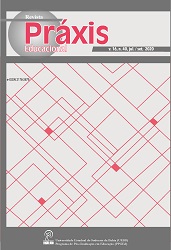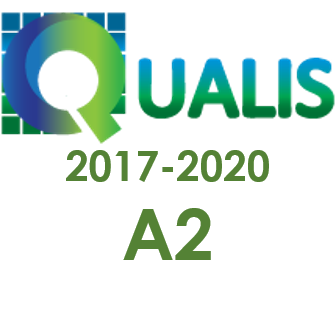POR QUE, PARA MANIPULAR A REALIDADE, PRECISAMOS REDUZI-LA?
DOI:
https://doi.org/10.22481/praxisedu.v16i40.6909Palavras-chave:
Manipulação, Humanidade, RealidadeResumo
É difícil exagerar a importância deste “pressuposto ontológico e epistemológico”, que está na alma da ciência eurocêntrica positivista, agressivamente reducionista (ao “lógico-experimental” e materialista), frontalmente seletiva (“ditadura do método” – só é real o que cabe no método). No entanto, também é difícil exagerar a importância desta visão modernista da ciência, uma das responsáveis mais contundentes do êxito tecnológico ocidental, um êxito que torna o questionamento do positivismo empreitada desafiadora. Levemos em conta que a tecnologia digital reedita, com contundência sem precedentes, o etos linear, sequencial, formal da ciência modernista, em contexto de eficiência superlativa: computador é máquina formidável (“superinteligente”), a ponto de poder, segundo muitos, suplantar em inteligência a inteligência humana.
Downloads
Metrics
Referências
ALTHUSSER, L. 1971. La Revolución Teórica de Marx. Siglo XXI, México.
ALTHUSSER, L. 1980. Ideologia e Aparelhos ideológicos do Estado. Editorial Presença, Lisboa.
BELLAH, R.N. 2011. Religion in Human Evolution – From the Paleolithic to the axial age. The Belknap Press of Harvard University Press, Cambridge.
BOURDIEU, P. & PASSERON, J.C. 1975. A Reprodução - Elementos para uma teoria do sistema educativo. Francisco Alves, Rio de Janeiro.
CHOPRA, D., PENROSE, R., CARTER, B. et alii. 2015. How consciousness became the universe: Quantum physics, cosmology, relativity, evolution, neuroscience, parallel Universes. Amazon, N.Y.
CHRISTIAN, B. & GRIFFITHS, T. 2016. Algorithms to live by: The computer science of human decisions. Picador, N.Y.
DAMASIO, A. 2018. The strange order of things: Life, feeling, and the making of cultures. Pantheon, N.Y.
DANTZIG, T. 2005. Number – The language of science - http://www.engineering108.com/Data/Engineering/Maths/Number_the_language_of_science_by_Joseph-Mazur_and_Barry-Mazur.pdf
DAVIES, P. & GREGERSEN, N.H. (Eds.). 2011. Information and the nature of reality. Cambridge U. Press.
DAVIES, P. & GREGERSEN, N.H. (Eds.). 2011. Information and the nature of reality. Cambridge U. Press.
DEMO, P. 1995. Metodologia científica em ciências sociais. Atlas, São Paulo.
DEMO, P. 2001. Pesquisa e informação qualitativa. Papirus, Campinas.
DEMO, P. 2011. Forças e fraquezas do positivismo – https://docs.google.com/document/pub?id=1eew1D-Lz18JrIGLMkk5qlN4b87EzlwUFF--E0Gsc3uE
DEMO, P. 2018. Educação como estratégia de ranqueamento social – Retomando a sociologia da educação reprodutiva, hoje – https://docs.google.com/document/d/e/2PACX-1vRP-_QGPYiReXLcH0rObkh7u7HuWSMC28vvtms3H76vMsmsRqzPwhoax_ws3HGy4-Fqzn_yzLz4MRf8/pub
ENGELS, F. 1979. Dialética da Natureza. Paz e Terra, Rio de Janeiro.
FAYER, M.D. 2010. Absolutely small: How quantum theory explains our everyday world. AMACOM. Amazon.
FREIRE, P. 1997. Pedagogia da Autonomia – Saberes necessários à prática educativa. Paz e Terra, Rio de Janeiro.
FRY, H. 2018. Hello World – Being human in the age of algorithm. Norton & Company. N.Y.
GERRISH, S. & SCOTT, K. 2018 How smart machines think. The MIT Press.
GIERE, R.N. 1999. Science without Laws. The University of Chicago Press.
GLEICK, J. 2011. The Information: A history, a theory, a flood. Pantheon, N.Y.
GROSZ, E. 2017. Incorporeal: Ontology, ethics, and the limits of materialism. Columbia U. Press, N.Y.
HARARI, Y.N. 2017. Homo Deus – A brief history of tomorrow. Harper, London.
HARARI, Y.N. 2018. 21 Lessons for the 21st century. Spiegel and Grau, N.Y.
HARRIS, S. 2014. Waking up: A guide to spirituality without religion. Amazon, N.Y.
HOFFMAN, D. 2019. The case against reality: Why evolution hid the truth from our eyes. Norton, N.Y.
HUBBARD, D.W. 2010. How to Measure Anything: Finding the Value of Intangibles in Business. Wiley, N.Y.
IOSCHPE, G. 2004. A Ignorância Custa um Mundo - O valor da educação no desenvolvimento do Brasil. Francis, São Paulo.
KAHNEMAN, D. 2011. Thinking, Fast and Slow. Penguin, N.Y.
KAUFFMAN. S.A. 2019. A world beyond physics: The emergence and evolution of life. Oxford U. Press.
LASZLO, E. (with Alexander Laszlo, Deepak Chopra, and S. Grof). 2016. What is reality? The new map of cosmos, consciousness, and existence. SelectBooks, N.Y.
LATOUR, B. & WOOLGAR, S. 2013. Laboratory Life – The construction of scientific facts. Princeton U. Press.
LATOUR, B. 2000. Ciência em Ação – Como seguir cientistas e engenheiros sociedade afora. Editora UNESP, São Paulo.
LATOUR, B. 2001. A Esperança de Pandora. EDUSC, São Paulo.
LATOUR, B. 2013. An Inquiry into Modes of Existence – An anthropology of the moderns. Harvard University Press, Cambridge.
LÉVI-STRAUSS, C. 1967. Antropologia estrutural 1. Tempo Brasileiro, Rio de Janeiro.
LÉVI-STRAUSS, C. 1976. Antropologia estrutural 2. Tempo Brasileiro, Rio de Janeiro.
LIPSON, H. & KURMAN, M. 2016. Driverless: Intelligent cars and the road ahead. The MIT Press, Cambridge.
MANGUEL, A. 1996. Uma História da Leitura. Companhia das Letras, São Paulo.
MARX/ENGELS. 1983. Werke. Vol. 23. Dietz Verlag, Berlin.
NOWAK, M. (with Highfield, R.) 2011. SuperCooperators: Altruism, evolution, and why we need each other to succeed. Free Press, N.Y.
PIAGET, J. 1990. La Construction du Réel chez l’Enfant. Delachaux & Niestlé, Paris.
PLATÃO. 2010. Apologia de Sócrates, o Banquete e Fedro. Folha de São Paulo.
POPPER, K.R. 1959. The Logic of Scientific Discovery. Hutchinson of London, London.
PRIGOGINE, I. & STENGERS, I. 1997. A Nova Aliança. Ed. UnB, Brasília.
PRIGOGINE, I. 1996. O Fim das Certezas – Tempo, caos e as leis da natureza. Ed. UNESP, São Paulo.
SCHNEIDER, S. 2019. Artificial You: AI and the future of your mind. Princeton U. Press.
SHANNON, C.E. & WEAVER, W. 1971. The mathematical theory of communication. The U. of Illinois Press.
SONI, J. & GOODMAN, R. 2017. A mind at play: How Claude Shannon invented the information age. Simon & Schuster.
TEGMARK, M. 2017. Life 3.0: Being human in the age of artificial intelligence. Knopf. N.Y.
THOMAS, A. 2012. Hidden in plain sight: The simple link between relativity and quantum mechanics. Amazon, N.Y.
THOMAS, A. 2018. Hidden in plain sight 10: How to program a quantum computer. Amazon Digital Services, N.Y.
UNGER, R.M. & SMOLIN, L 2014. The singular universe and the reality of time: A proposal in natural philosophy. Cambridge U. Press, Cambridge.
Downloads
Publicado
Como Citar
Edição
Seção
Licença

Este trabalho está licenciado sob uma licença Creative Commons Attribution-ShareAlike 4.0 International License.
Você é livre para:
Compartilhar - copia e redistribui o material em qualquer meio ou formato; Adapte - remixe, transforme e construa a partir do material para qualquer propósito, mesmo comercialmente. Esta licença é aceitável para Obras Culturais Livres. O licenciante não pode revogar essas liberdades, desde que você siga os termos da licença.
Sob os seguintes termos:
Atribuição - você deve dar o crédito apropriado, fornecer um link para a licença e indicar se alguma alteração foi feita. Você pode fazer isso de qualquer maneira razoável, mas não de uma forma que sugira que você ou seu uso seja aprovado pelo licenciante.
Não há restrições adicionais - Você não pode aplicar termos legais ou medidas tecnológicas que restrinjam legalmente outros para fazer qualquer uso permitido pela licença.










